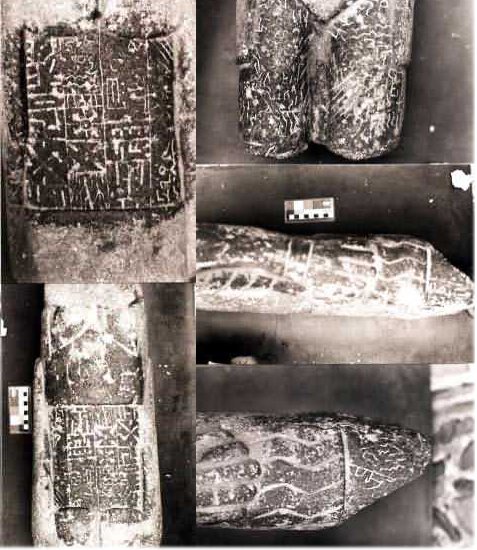Inscription On Pokotia Monolith Reveals Sumerians Visited Peru Thousands Of Years Ago
Ellen Lloyd - AncientPages.com - This time our quest for the hidden history of mankind takes us to Peru where we encounter an enigmatic inscription that offers evidence Sumerians crossed the ocean thousands of years ago and left traces of their civilization.
On the site of Pokotia that is located about 2 km from the city of stone Tiahuanaco, there is a monolith that was discovered around 1960. The Pokotia monolith is not very high. It measures only 170 cm, but it is intriguing nevertheless.
In 2002, several researchers analyzed the monolith and discovered the stone had inscriptions on the front and on the back.
Credit: Clyde Winters
It has been suggested that the monolith Pokotia may have been carved in a period prior to the flourishing of the civilization Pukara. According to the official linguistic term, Pukara comes from Quechua and means fortress or strategic place from where you can control a valley or the confluence of two rivers.
The place where the Pokotia monolith was discovered has been identified by some researchers as a sacred site or an oracle.
Is the Pokotia monolith a depiction of an ancient god of great importance perhaps?
American epigraphist Clyde Winters who deciphered the inscription on the Pokotia monolith concluded the writing is of proto-Sumerian origin. According to Winters in the monolith of Pokotia, there are various inscriptions (proto-Sumerian origin), but the most important ones are below the hands (which are resting on thighs), and in the dorsal part (in the back of the statue). The signs used to write the messages on the Pokotia monolith were non-liguture Proto-Sumerian symbols.
The inscription under the hand on the Pokotia figure is very interesting:
"The oracle Putaki conducts man to truth. (This) esteemed (and) precious oracle to sprout esteem, (now) witness (its) escape".
The Decipherment of the back inscription of Putaki is below. The writing on the back is written in Proto-Sumerian. The language used to read the inscriptions was Sumerian.
Credit: Clyde Winters
"Proclaim the establishment of character. The strong father (Putaki) to send forth the divination. Strong wisdom (in this) phenomenal area of the deity's power. Capture the speech (of the oracle). (The oracle is ) very strong to benefit (and) nourish the sprouting (of) character. Tell human being(s) (the oracle's) benefit. The oracle to open (up) much (benefit for all)."
"The ideal norm (is the) oracle (of Putaki). (This) oracle is (in) a phenomenal area of the deity's power". Distribute to all humanity (the divine decree). Snare a portion (of the) pure voice. (The oracle to) send forth gladness. Agitate the mouth (of the oracle), to send forth the divination. The diviner speaks good."
"The ideal norm (is this) oracle. (This) oracle (gives) divine decree. Distribute to all humanity (the divine decree). Snare a portion (of the) pure voice. (The oracle to) send forth gladness. Agitate the mouth (of the oracle), to send forth the divination. The diviner speaks good."
"The divine decree to become visible and glisten (from the oracle's own) mouth. Open up the divination. Agitate the oracle (to) send forth (now) wisdom and character. Open (the oracle) to distribute the divine decree (for all it is) lawful and righteous Good. Send forth the sustenance of the pure oracle. Stand upright (Oh oracle) to appear as a witness speaking purity. The oracle (of Putaki) to open (up and) send forth gladness and character".
"(Putaki) speaks (in) true measure, to send forth gladness (for all). Send forth nourish(ment). (The oracle Putaki is) the father of wisdom (and) benefit (for all). (The oracle) to become a visible witness of the diving decree and knowledge. (This) pure oracle speaks the divine decree (and) makes (it) a visible witness (of the deity's power)."
"The inscriptions on the back of the Pokotia statue define the role of the Putaki oracle in the community. It would appear that the people should recognize this oracle as a source of "truth" and glad tidings. Its additional role was to establish rigtheousness, wisdom and good character for the members of the community who might use this oracle to communicate with the gods.
Throughout this inscription, the Putaki oracle is called the "father". For example, in column 1, it was written that: "Proclaim the establishment of chracter.
The strong father (Putaki) to send forth the divination". And, in column 4, we discover that [Putaki is] the father of wisdom (and) benefit (for all).
This suggest that Putaki was recognized as the great ancestor of other oracles in the region.
This suggest that offspring of this oracle was probably situated in other parts of Peru-Bolivia, where the people went to divine the future, communicate with the gods or ancestors, or simply obtain blessing and glad tidings from the oracle, "Winters said.
Based on these inscriptions Winters, concluded that the monolith of Pokot was an oracle whose name was Putaki. Since the inscriptions are of proto-Sumerian origin it means Sumerians crossed the oceans and visited Peru in ancient times.
Written by - Ellen Lloyd - AncientPages.com
Copyright © AncientPages.com All rights reserved. This material may not be published, broadcast, rewritten or redistributed in whole or part without the express written permission of AncientPages.com
More From Ancient Pages
-
 Unique Ancient Aryan Bow Reconstructed By Archaeologists
Archaeology | May 20, 2022
Unique Ancient Aryan Bow Reconstructed By Archaeologists
Archaeology | May 20, 2022 -
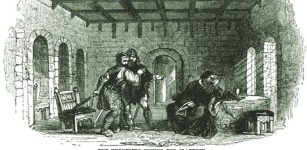 On This Day In History: George Plantagenet Privately Executed At The Tower Of London – On Feb 18, 1478
News | Feb 18, 2017
On This Day In History: George Plantagenet Privately Executed At The Tower Of London – On Feb 18, 1478
News | Feb 18, 2017 -
 Almost 1000 Previously Undiscovered Prehistoric Barrows Identified In The Netherlands
Archaeology | Oct 15, 2024
Almost 1000 Previously Undiscovered Prehistoric Barrows Identified In The Netherlands
Archaeology | Oct 15, 2024 -
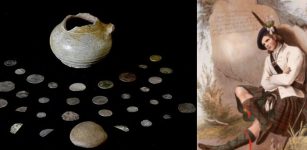 Coin Hoard Paints A Fascinating Picture Of Life Of Highland Clan Chief And His Household
Archaeology | Oct 13, 2023
Coin Hoard Paints A Fascinating Picture Of Life Of Highland Clan Chief And His Household
Archaeology | Oct 13, 2023 -
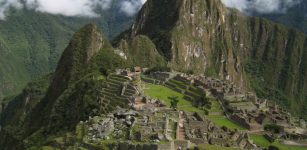 Study Traces DNA Of Inca Emperors To Their Modern-Day Descendants
Archaeology | May 29, 2018
Study Traces DNA Of Inca Emperors To Their Modern-Day Descendants
Archaeology | May 29, 2018 -
 Ancient Mediterranean Mystery In The Himalayas Puzzles Archaeologists – Can DNA Or Legends Solve The Riddle?
Featured Stories | Sep 24, 2024
Ancient Mediterranean Mystery In The Himalayas Puzzles Archaeologists – Can DNA Or Legends Solve The Riddle?
Featured Stories | Sep 24, 2024 -
 Sumerian King List – Ancient Record Of Kingship That Has Long Been Of Great Interest
Artifacts | Jan 22, 2016
Sumerian King List – Ancient Record Of Kingship That Has Long Been Of Great Interest
Artifacts | Jan 22, 2016 -
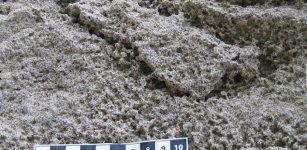 First Neanderthal Footprints Discovered In Gibraltar Dunes
Archaeology | Feb 14, 2019
First Neanderthal Footprints Discovered In Gibraltar Dunes
Archaeology | Feb 14, 2019 -
 Historic Shipwreck Margaret A. Muir Found In Lake Michigan, Wisconsin
Archaeology | Jul 29, 2024
Historic Shipwreck Margaret A. Muir Found In Lake Michigan, Wisconsin
Archaeology | Jul 29, 2024 -
 Can Peptide Droplets Explain The Emergence Of The First Living Organisms On Earth?
Archaeology | Oct 20, 2021
Can Peptide Droplets Explain The Emergence Of The First Living Organisms On Earth?
Archaeology | Oct 20, 2021 -
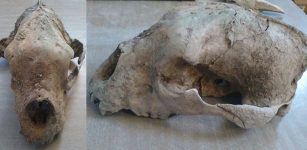 Skull And Jaw Of Giant Bear Of The Late Pleistocene Found In Buenos Aires
Archaeology | Mar 15, 2018
Skull And Jaw Of Giant Bear Of The Late Pleistocene Found In Buenos Aires
Archaeology | Mar 15, 2018 -
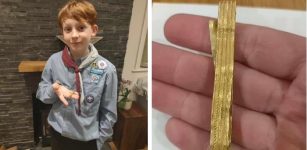 Young Boy Discovers Rare Ancient Roman Treasure In Sussex, UK
Archaeology | Apr 15, 2024
Young Boy Discovers Rare Ancient Roman Treasure In Sussex, UK
Archaeology | Apr 15, 2024 -
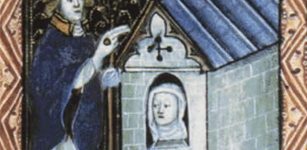 Coronavirus: Advice From The Middle Ages For How To Cope With Self-Isolation
Featured Stories | Mar 29, 2020
Coronavirus: Advice From The Middle Ages For How To Cope With Self-Isolation
Featured Stories | Mar 29, 2020 -
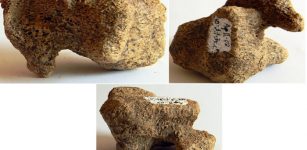 12,000 Years Ago Siberian People Possessed Technique To Soften Ivory And Create Toys Or Art Items
Ancient Technology | Jan 6, 2021
12,000 Years Ago Siberian People Possessed Technique To Soften Ivory And Create Toys Or Art Items
Ancient Technology | Jan 6, 2021 -
 2,000-Years-Old Warrior Graves With Iron Swords, Mysterious Square Structures, Unearthed In Bejsce, Poland
Archaeology | Nov 21, 2019
2,000-Years-Old Warrior Graves With Iron Swords, Mysterious Square Structures, Unearthed In Bejsce, Poland
Archaeology | Nov 21, 2019 -
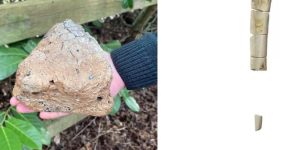 Evidence Of Millennia-Old Textile Manufacture And Rare Ancient Eagle-Bone Pin Discovered In Oxfordshire
Archaeology | Jun 13, 2023
Evidence Of Millennia-Old Textile Manufacture And Rare Ancient Eagle-Bone Pin Discovered In Oxfordshire
Archaeology | Jun 13, 2023 -
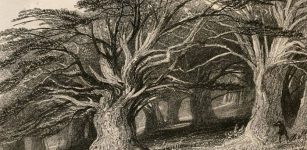 Yew: Mysterious Ominous And Sacred Tree Revered By Our Ancestors Since The Dawn Of Civilization
Featured Stories | Feb 8, 2022
Yew: Mysterious Ominous And Sacred Tree Revered By Our Ancestors Since The Dawn Of Civilization
Featured Stories | Feb 8, 2022 -
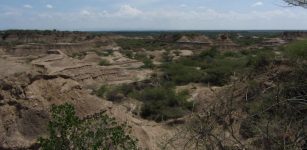 230,000-Year-Old Human Remains Discovered In Eastern Africa – Rewrite Ancient History
Archaeology | Jan 14, 2022
230,000-Year-Old Human Remains Discovered In Eastern Africa – Rewrite Ancient History
Archaeology | Jan 14, 2022 -
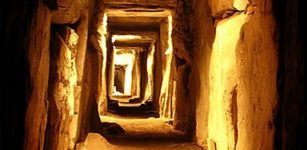 World’s Oldest Moon Map Carved Into Ireland’s 5,000 Year-Old Tomb At Knowth
Featured Stories | Jun 25, 2014
World’s Oldest Moon Map Carved Into Ireland’s 5,000 Year-Old Tomb At Knowth
Featured Stories | Jun 25, 2014 -
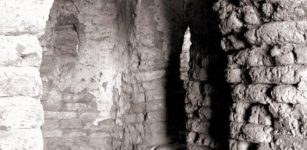 900-Year-Old Crypt At Old Dongola: Magical Inscriptions And Mysterious Signs Found
Archaeology | Sep 12, 2015
900-Year-Old Crypt At Old Dongola: Magical Inscriptions And Mysterious Signs Found
Archaeology | Sep 12, 2015


